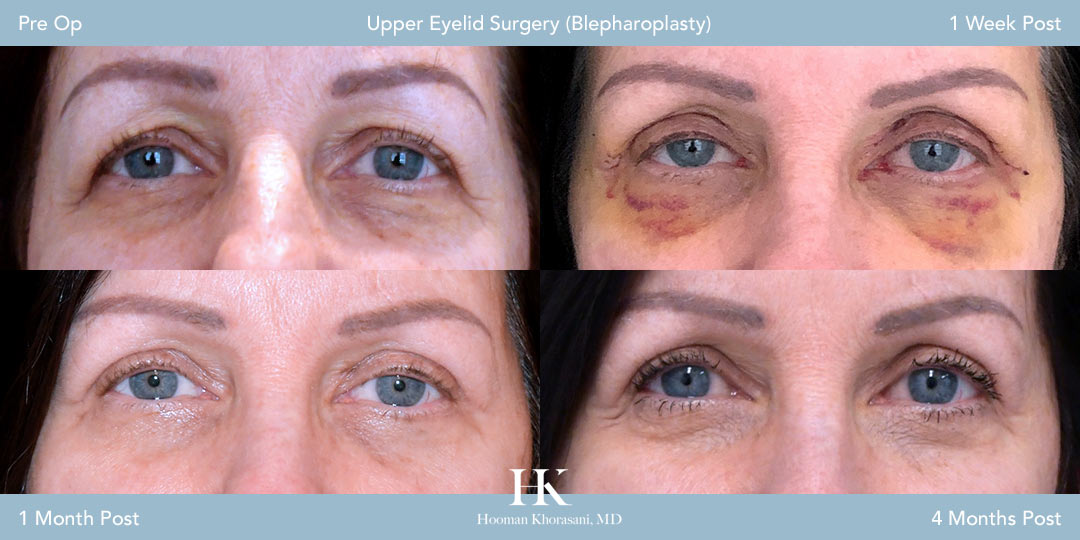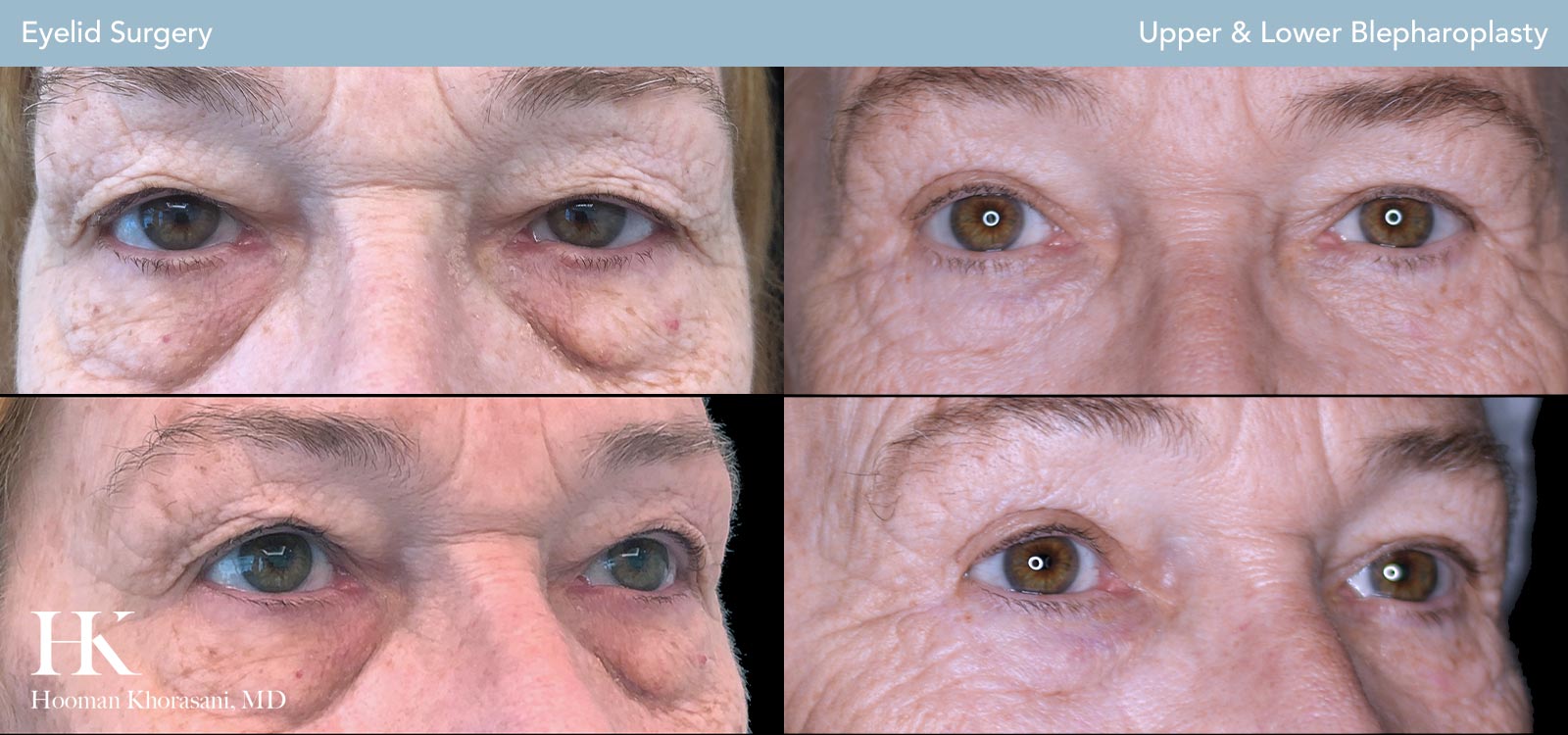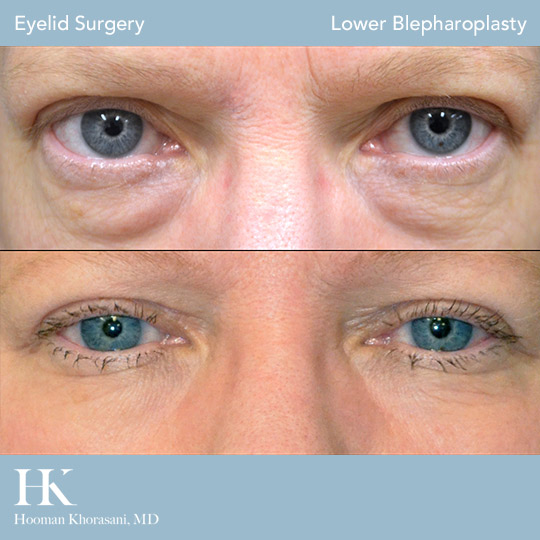Non-Invasive Procedures
Wrinkle Reduction (Botox/Dysport)Face Contouring (Fillers)Hand RestorationHair RestorationLip AugmentationNose Reshaping (Rhinoplasty)Face & Neck Lift TreatmentsFacial Rejuvenation (Aquagold)
One day, you look in the mirror and suddenly realize that you look old way too soon because your eyelids droop, or little pads of fat make your eyes look puffy.
You decided to restore your youthful appearance with eyelid surgery and now that your surgery is done, you can’t wait to see the results. Here at Hooman Khorasani, MD, we understand that it’s hard to wait for your eyelids to heal. Here are our best tips for ensuring that your recovery goes as quickly as possible.
Most people get back to their normal activities in about 10-14 days after eyelid surgery, but you should be prepared to take time off to let your eyelids heal. A good way to speed your recovery is to cover your primary responsibilities ahead of time.
Whether you need to stock the pantry with easy-to-prepare foods or ask a friend to take children to their activities, it’s important to clear your schedule so that you can focus on resting.

Visit our Before and After Gallery for more photos from past patients.
Talk with the team at Hooman Khorasani, MD before your surgery to learn what you’ll need for self-care after your eyelid procedure. That way, you can get what you need and have it on hand when you get home from surgery.
Some of the basics for eyelid care following surgery include cold compresses to reduce swelling, eye drops to prevent dry eyes, and an ointment to keep them lubricated. You’ll also need to have gauze in the house. If your incision oozes while it heals, you can dab it (don’t rub!) with a sterile gauze.
You’re not going to look great for a short time. Your eyelids will be puffy, your incisions will appear red, and the swelling and bruising may resemble a black eye. This is a hard time for most of our patients because they’re anxious to see results. Don’t let recovery time get you down.
The swelling goes away in about two weeks. Shortly after that, you’ll see the change — and what a difference it will make. You’ll look younger, your eyes will look brighter, and you’ll feel on top of the world.

There’s no getting around it — you must protect your eyes from sunlight and other elements like the wind. Wear dark sunglasses with frames that cover your eyes from the sides. Add a hat for extra protection. And follow your post-surgery instructions about applying sunscreen.
Don’t check email, read a book, or catch up on a full season of your favorite TV show for at least a week following eyelid surgery. These activities are notorious for causing dry eyes, and that’s something you need to avoid if you want to speed up your recovery.
Getting rest applies to your body as well as your eyes. In fact, getting a good night’s sleep is one of the best ways to accelerate your recovery because lack of sleep slows down wound healing.
Healing demands a lot of energy, so you’ll probably feel more tired than usual. Plan to take naps when you feel tired. This is not the time to push yourself to keep moving — not if you want to heal as quickly as possible.

During the first two to four weeks after your eyelid surgery, it’s important to avoid activities that increase blood flow to your eyes. This means you’ll need to avoid the obvious culprits, like jogging, aerobics, sports, and intensive exercise.
You’ll also want to be mindful about everyday activities that increase pressure in your head and force more blood into your eyes, such as bending, lifting heavy items, and lying flat on your back.
Another way to promote better wound healing and hasten your recovery is to avoid stress. You can do this during your recovery by stepping away from work (no phone calls or emails) and by planning for ways to pass the time that are uplifting and don’t require using your eyes. You may want to beef-up your playlist or stock-up on audiobooks — whatever you’ll enjoy while you relax your eyes and body.
If you smoke, you should know that smoking affects healing. It slows down healing, which means your recovery drags on. Smoking also increases your risk of infection following surgery. You can avoid these problems if you stop smoking at least six weeks before surgery.
Any time you have a question or concern about your eyelids while you recover, we’re here to help — the team at Hooman Khorasani, MD, are only a phone call away.
Dr. Khorasani is quadruple board-certified in Dermatology, Cosmetic Surgery, Facial Cosmetic Surgery and Mohs micrographic surgery. Additionally he led lead the Division of Dermatologic and Cosmetic Surgery at Mount Sinai for over 10+ years. His dedication to clinical excellence and constant innovation has led to numerous accolades, publications in premier medical journals, and authorship of a widely-used thread lift manual. He is considered an international expert in minimally-invasive rejuvenation and has spent a majority of his career training the next generation of dermatologists and cosmetic surgeons.

To read more visit our eyelid surgery page and check out our before and after gallery.
To find out whether eyelid surgery can give you a renewed vibrance and refreshed look, visit Dr. Khorasani at our New York City practice. To request a consultation, message us securely, or contact Dr. Khorasani’s Manhattan office by phone at 212-230-3378.


We look forward to meeting you and offering the care and expertise you deserve. To expedite a request for a consultation, message us securely. You may also contact the office by phone at 212-230-3378, or fill out the information below.
